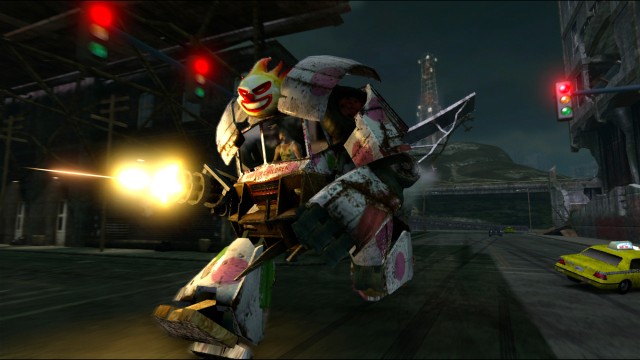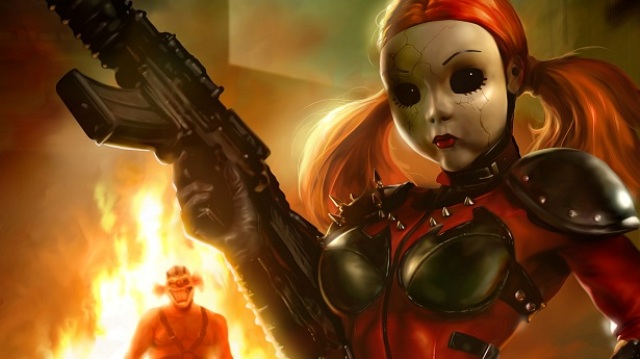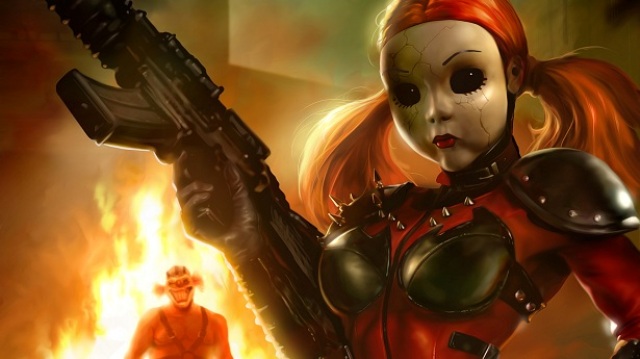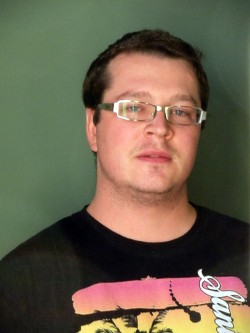Sony recently held a Twisted Metal launch event in San Francisco. Developed by Eat Sleep Play, the game heralds the return of the longest-running PlayStation-exclusive franchise and the series’ first outing on the PlayStation 3.
While design director David Jaffe was busy offending women all over the Internet, GamesBeat sat down with Operations Director Angelic Quintana and Producer Drew Bradford to discuss the impending release of the Salt Lake City, Utah-based studio’s second release in four-and-a-half years.
Eat Sleep Play is composed mainly of members from previous Sony studios SingleTrac, which developed the PlayStation 1-era Twisted Metal titles, and Incognito Entertainment, which developed the more recent Twisted Metal titles for PlayStation 2, as well as Warhawk for the PlayStation 3.
Interestingly, shortly after this interview, Eat Sleep Play announced that it had laid off roughly 25 percent of its staff and would be focusing on iOS development, while studio co-founder Jaffe will also be departing.
You can read a lot more from Jaffe himself in our article on his DICE 2012 presentation, where he explains why video games should not focus on stories. Here’s the transcript of our talk with Quintana and Bradford:
GamesBeat: [Eat Sleep Play] went from Calling All Cars to Twisted Metal. Two vehicular combat games. Did you carry anything over? They’re obviously very different, but was there overlap in what you could apply from the previous title?
Quintana: Well, actually we went from Calling All Cars to the port of Twisted Metal: Head-On, for PS2.
Bradford: Well, Calling All Cars was Incognito…
Quintana: That was Incognito, yes, so this is the second game for Eat Sleep Play. So it’s kind of hard to say it’s carried over, because car combat is what this team has done, has always done. And has done since Twisted Metal one. It’s not so much a carry-over. We kind of look at it as a rebirth or re-invention.
GamesBeat: Incognito was responsible for War of the Monsters, correct?
Quintana: Yes.
GamesBeat: I don’t know how it did, but that was one of my favorite PlayStation 2 games. That was the one I forced everyone who came over to my house to play.
Quintana: War of the Monsters actually did pretty well. Not exceptionally, but it did pretty well. It made revenue, it did well for the studio. And it’s one of the games where we get the most requests for a sequel. We get more requests for that than just about anything else.
GamesBeat: I don’t understand… well, don’t let me get sidetracked into a fighting game conversation! Okay, so back to Twisted Metal, what was it that you set out to achieve with this game? Not just from design, but maybe for your company?
Quintana: I would say, one, it’s for PS3. We kind of wanted… not so much a rebirth as a rejuvenation of Twisted Metal. There are so many things that have been the same all along. With the new console, the new power, new processing, we wanted to showcase what we really could do with Twisted Metal had we always had the PS3. It was more of a rejuvenation of it, with adding the characters, things like that. Not so much the characters, but we haven’t had characters in the cars before. This was a new thing for us.
GamesBeat: What were those things that the PlayStation 3 allowed you to do specifically?
Bradford: Definitely the online experience, having tons of players in a game online, whereas on Black they were limited to four-way split and just a few players online with the Network Adaptor. 16 players online going 200 miles an hour, crashing headlong into each other, shooting missiles, trying to kill each other, it’s absolute insanity. It’s just chaos at all times in some of the game modes. We didn’t want to mess with the formula too much, I know that. There’s that nostalgia factor, all those… You go back to Mario, you go back to Zelda, and people have that… They think they know what it was like back then. Granted, they could go back and play that game and it’s not gonna be that same game they thought it was. But in their head… that’s what we’re trying to put in this game, that nostalgia that people had sitting on the couch beating up their brother or whoever playing split-screen. And make it come alive. That, “Oh, I love that game, it’s great, and this one feels just like I thought I remembered it.” That kind of thing. Making it something that doesn’t exist, but people think it exists. That’s hard.
GamesBeat: Meeting their expectations?
Bradford: Yeah. Going back, you try to remake GoldenEye…
GamesBeat: Which Activision has tried to do….
Bradford: Right! And a lot of people have failed. To me, that’s my favorite game of all time, but…
Quintana: Well, a lot of the time it’s like giving the player what they want before they know they want it. And then once you give it to them, it’s like, “Oh, yeah, this is exactly what I wanted!”
Bradford: Right. Listening to them, but boiling that down into what they really want. Somebody could tell you, “I want faster weapons.” But maybe they don’t want that. Maybe they want to do more damage. So if the weapons go faster they do more damage. Well, maybe we don’t want to do that; maybe we want to make the weapons do more damage instead. But giving them what they want, right? They may ask for something, but you give them something else that they’re really asking for.

GamesBeat: Speaking about that, I was at Comic-Con last year, where [Scott] Campbell and [Dave] Jaffe were on stage showing off a bunch of new content, and they were toying around with ideas, like, a mile-long map… And they were basically just soliciting advice from the fans. “Do you guys want this? What do you guys want? Help us decide these features.” Which I thought was really cool, because most developers are a little more stubborn. They were literally talking directly to the fans. Throughout the development of the game, how much has fan feedback swayed in-game content?
Quintana: Well, the philosophy is, you don’t just design the game that you want. You design the game that your fans want. And so sometimes it is a challenge to split those. Because you know what you like and what you would want, but you come from a different place than many of your fans do. So one of the great things about Scott and Dave is they give us a lot of feedback. You’ve probably seen Dave’s blog, and his site. He asks a lot of questions of the fans. We look at the forums, it’s all that kind of thing…
Bradford: He gets a lot of Twitter stuff coming in.
Quintana: Yeah. Lots of stuff like that. We try to take all of that and incorporate that into what we feel you would like and you would play.
GamesBeat: You were telling me that you’re kind of like the filter for the somewhat notorious David Jaffe?
Quintana: Yes. We try to be.
GamesBeat: But he still slips a few out every once in a while.
Quintana: Yes. The thing about Dave is, it’s like caging a wild animal. You can try. But it’s not so much that we want to stop what he has to say or filter what he has to say. It’s more like a timing thing. … Because everything Dave has to say is usually pretty honest, it’s really up front, it’s in your face. Which is great. We don’t want to stifle that. But a lot of the time it’s just… Sometimes you want to keep that information for a particular release time.
GamesBeat: At the same time, he’s so prevalent whenever you’re talking about something at Eat Sleep Play or Twisted Metal or whatever. … How does that impact the team when…? You were saying, there’s 38 team members, there’s a ton of people working on this game. Everyone’s doing it. He’s just one cog in the machine. It’s the same way I would imagine… Like, Transformers is associated with Michael Bay. When there’s hundreds of people that work on it. How do you guys combat that?
Quintana: The thing is, it’s not so much a combat. Just like you saw on stage tonight, Jaffe is really good about trying to let people know that it’s not just him, that there is a whole team behind him in this. He could be the most amazing idea guy, but somebody has to bring those ideas to fruition, and he’s really great about giving the credit to the team that actually makes that happen. … People ask him, “Where did you come up with this, how did you do this?” And he’ll say, “Well, it started with this little nugget that I came up with, but these are the guys that actually made that happen.” He has been great about that. I don’t think there’s a time where he has taken credit for this game and not mentioned the studio and the 37 other people that make that happen.




